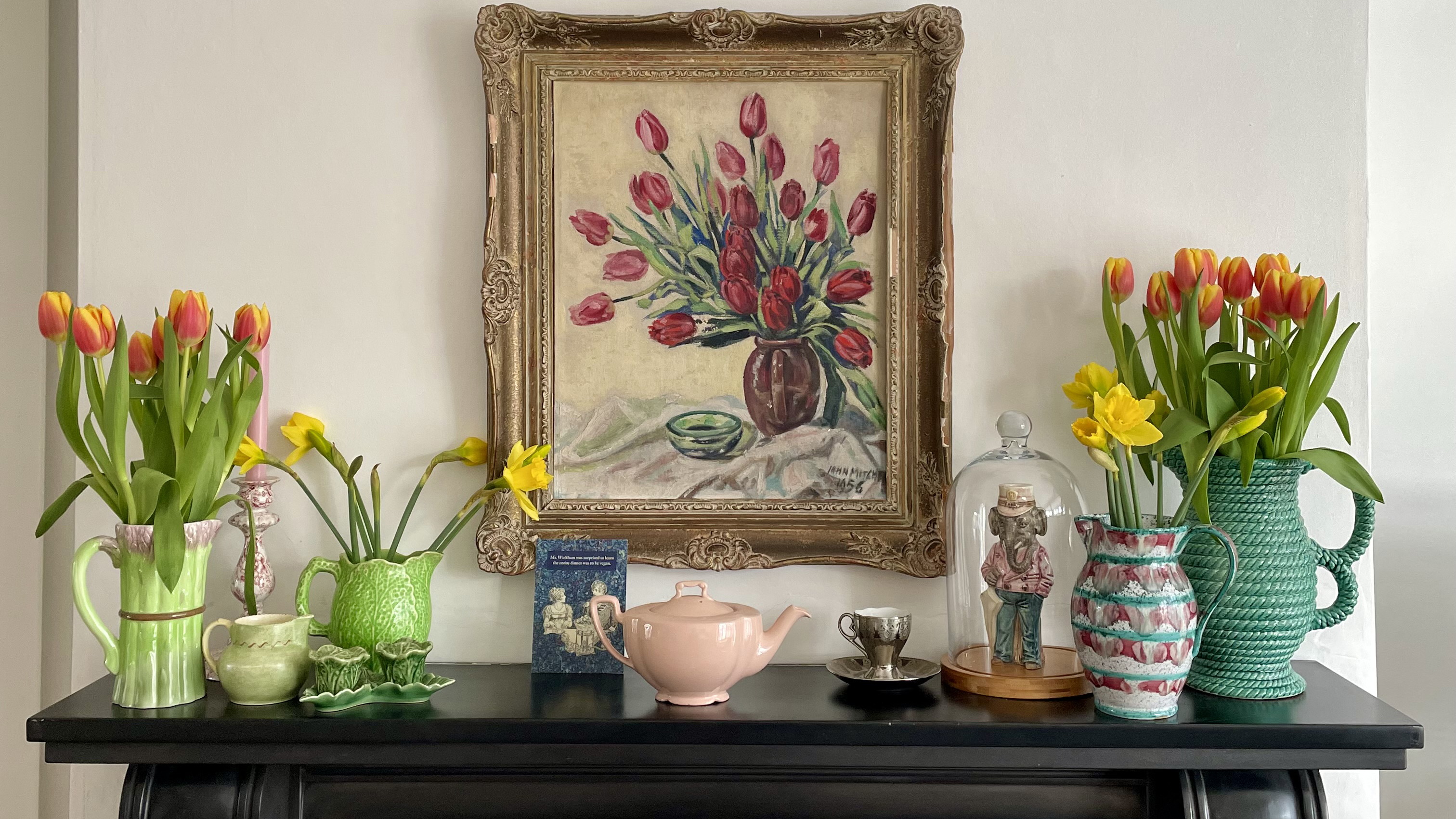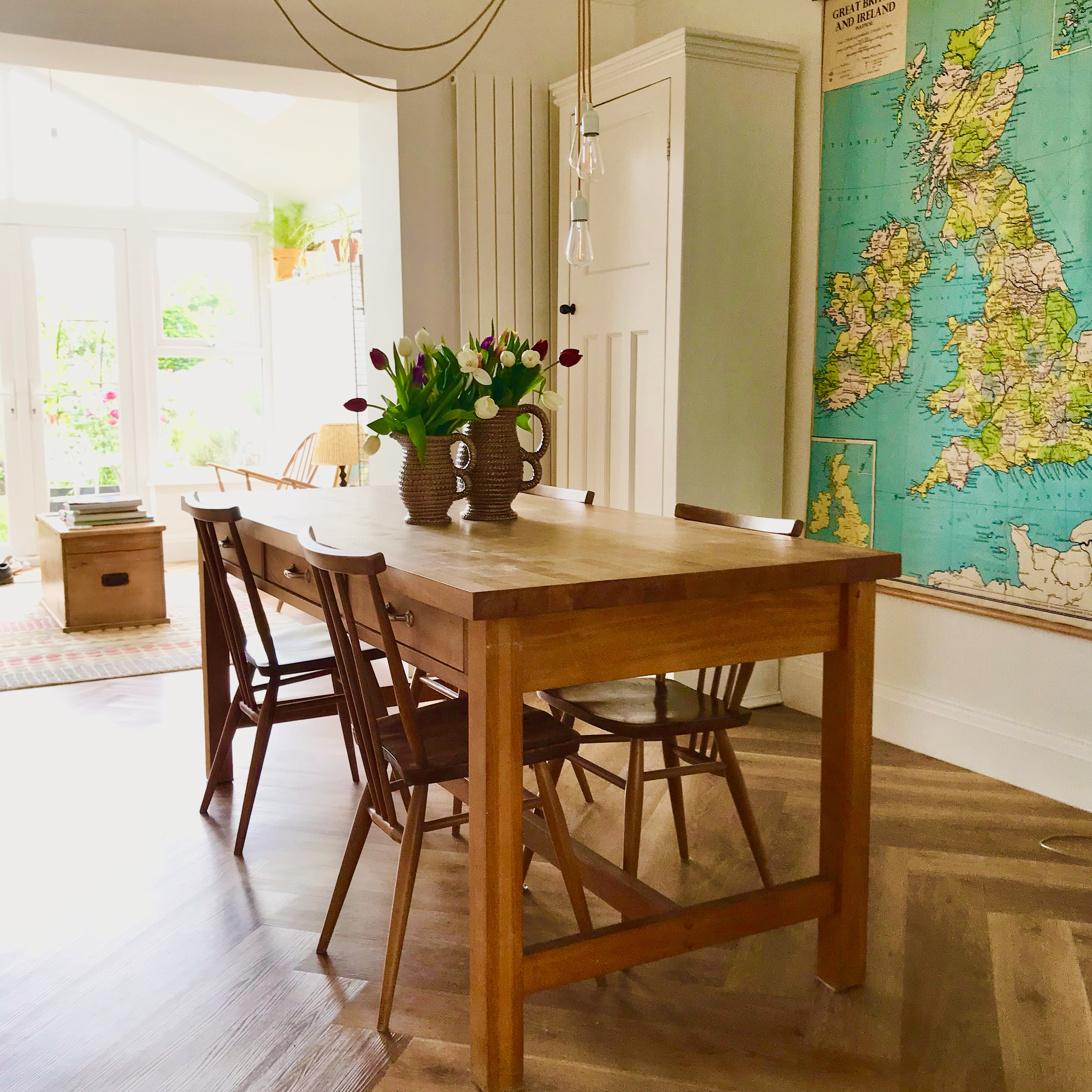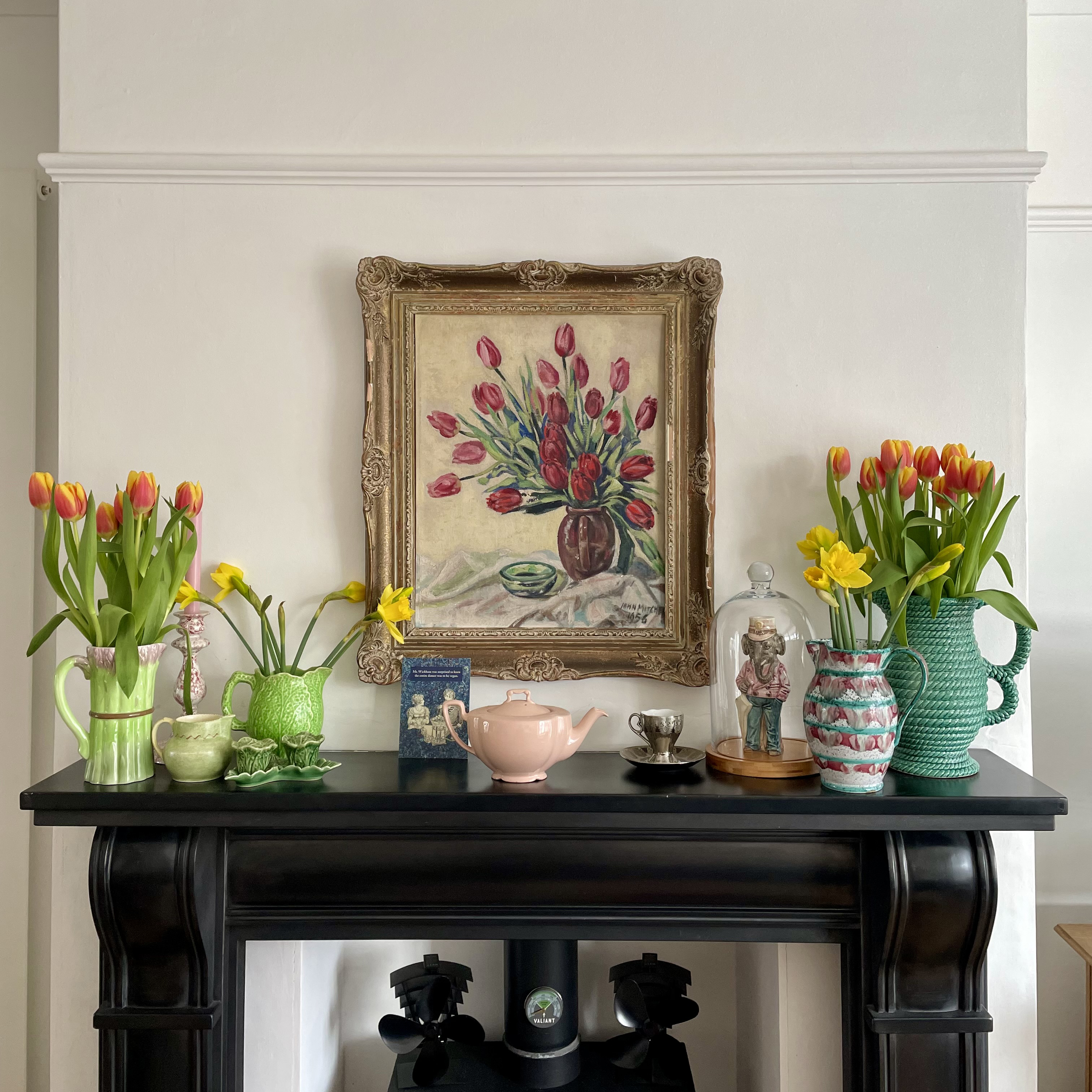How to break up with fast interiors and save yourself time, energy and money – our planet will thank you for it
These are the 8 rules I use to help me decide how to make sustainable decorating choices



Amanda Jones is one of Ideal Home's new Open House contributors, sharing her thoughts on sustainable living and decorating a home in way that is good for the environment. See the rest of her articles here.
I was 10 years old when I first experienced the pull of interior design. I had just been given my own bedroom, and my mum said I could decorate it anyway I chose. My very small room (just enough room for a single bed and set of drawers), was decorated floor to ceiling with a chocolate brown wallpaper, dotted with small apricot-coloured flowers. It must have been quite overwhelming, but to me it was cosy and comforting. I was hooked, and I’ve been obsessed with interiors since.
So, what do I mean by fast interiors? And why should we be avoiding it? It is interior spaces that have been designed in a very heavily trend focused way. It’s buying mass produced home goods that are often poorly made, and where the manufacturers have given very little (or no) thought to the conditions in which the items were made and by whom. No consideration has been made to where the raw materials were sourced, how this impacts the planet, or environment. No thought has gone into the manufacturing process, the air miles, or how easily it is to recycle the item once it has served its purpose (and in fast interiors, that’s often not a long-life cycle).
Interior design can be very addictive, especially for those of us who choose to share our homes on social media. It’s easy to feel pressured to continually change our home décor, to keep up with the face paced world of social media, chasing likes, and affirmation from others.

Fast interiors is wasteful, very expensive, and time consuming. When did it become the norm to change your entire bedding every year, or buy a new sofa every couple of years just because that mustard colour is no longer trendy? When did this change happen? It wasn’t always this way, our parents/grandparents would never have been able to afford to do this, you bought the best you could afford, looked after it, and repaired things as needed. Very little got thrown away. We have become so much more wasteful and it’s not good for us, or our planet.
If you are wanting to get off this treadmill of continual spending and replacing, then here are my tips on how:
- Realise what your over consumption is doing to your bank balance and educate yourself about the impact globally our overconsumption is doing to the planet. I firmly believe when we know why we want to change our behaviours, it makes it much easier to stick to. Those changes become ingrained habits.
- Avoid interior trends. Don’t be too swayed by What’s Hot In 2026, because those same things may also feature in What’s Out in 2027. If something is trending, and you really love the look, then wait before purchasing something. If you still like it 6-12 months down the line, and you think you’ll still love it in five years’ time, go ahead and make that purchase. It will be a welcome and much-loved item for years to come.
- Develop your OWN style. This takes confidence and time, but it is worth it. What interiors style make you feel most comfortable, what colours bring you joy, what textures do you love? What would you buy today, that you’ll still appreciate in 20 years’ time, or if you might let go of it before then, is it good enough quality to resell?
- Take your time, develop a room with intention, curate it slowly and with care. You don’t need to rush; our biggest most expensive mistakes are made because we’ve rushed decisions.
- Buy second-hand first, if you can. Buying second-hand, not only stops the demand for new things being made, but older items are often better made and can be cheaper. Buying something preloved, stops it potentially going to landfill.
- If you need to buy new, use smaller businesses. I will always try and support small business if I can, they are usually much more mindful of the impact they are making, often smaller businesses are more accountable and transparent. You usually get great customer service to.
- Follow interior accounts on social media who embrace slow interiors, who incorporate lots of second-hand or vintage furniture into their homes. Accounts that talk about sustainability and reducing consumption. There are so many more now, it gives me hope that people are becoming more aware of the waste we are producing and want to change their habits.
- Lastly, if you don’t need to buy something, or change something, then quite simply don’t. Leave it be. If I really fancy a change all I do is swap around furniture, art or a vase on a shelf, I get the same satisfaction of change, without bringing anything new into my home. It’s a win, win.

The interiors industry is rapidly going in the same direction as fast fashion, and we need to stop it. We need to slow down our consumption, and we need to demand that big corporations, making goods and décor for our homes do so in a more sustainable and thoughtful way.
Sign up to our newsletter for style inspiration, real homes, project and garden advice and shopping know-how
I am seeing more and more interior designers, and interior social media accounts talking about this, more people are advocating a slower more environmentally sensitive approach to interior design. I’m very hopeful we can change things. We can break up with fast interiors, I did, so can you.

Amanda Jones is the passionate slow interiors advocate behind the successful Instagram account Small Sustainable Steps. With over 30,000 followers, it's here she documents her way to live and decorate your home that is all about sustainability at its core.
'Slow interiors means stepping off the trend treadmill, it’s about slowing things down, and pressing the pause button,' she says. 'Finding out who you really are, what you and your family really need. You’ll waste less time, less money, and ultimately reduce what you send to landfill.'
You must confirm your public display name before commenting
Please logout and then login again, you will then be prompted to enter your display name.